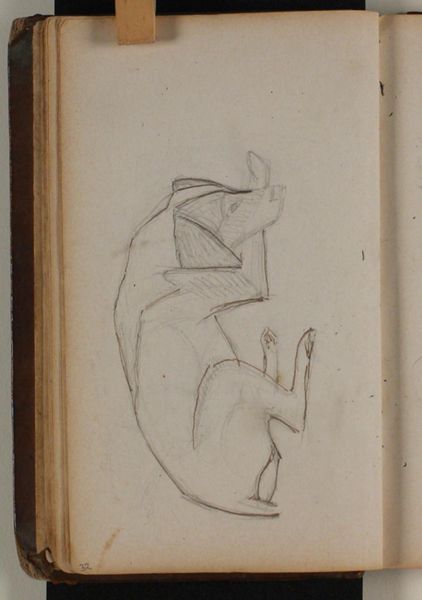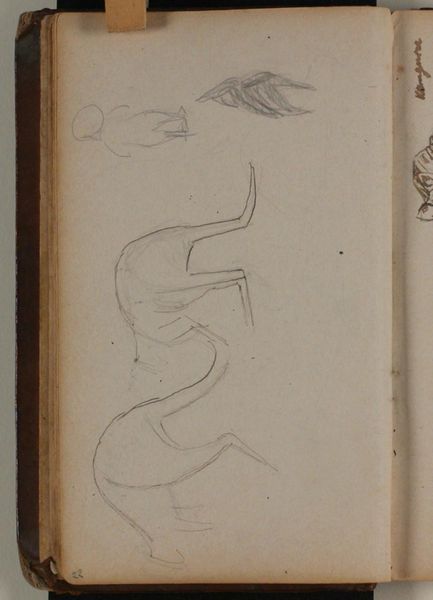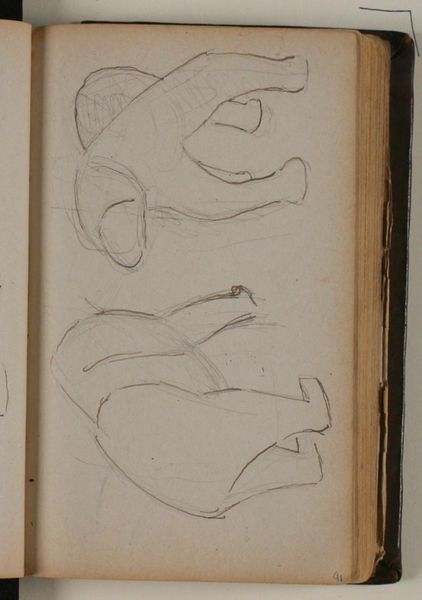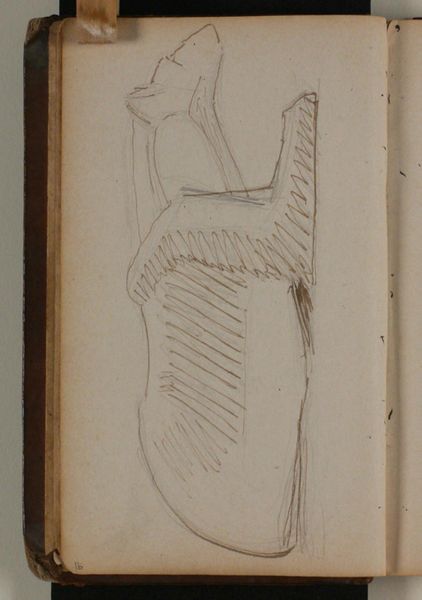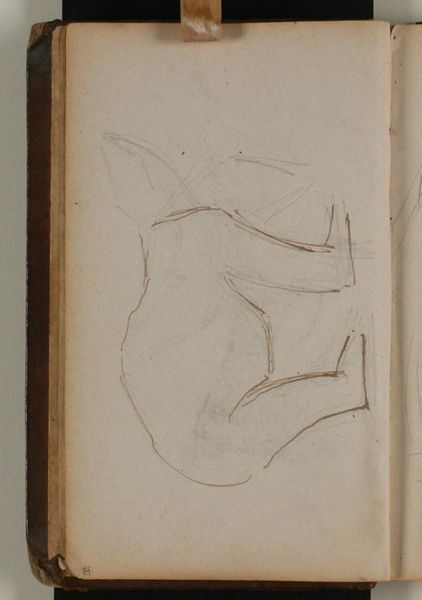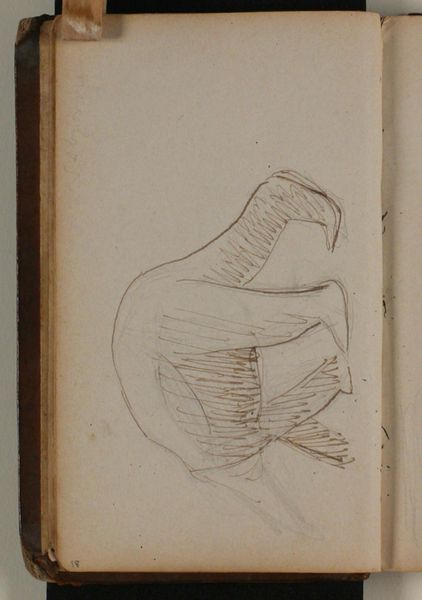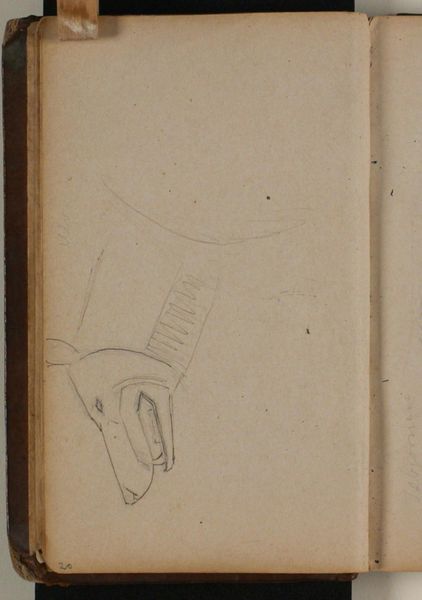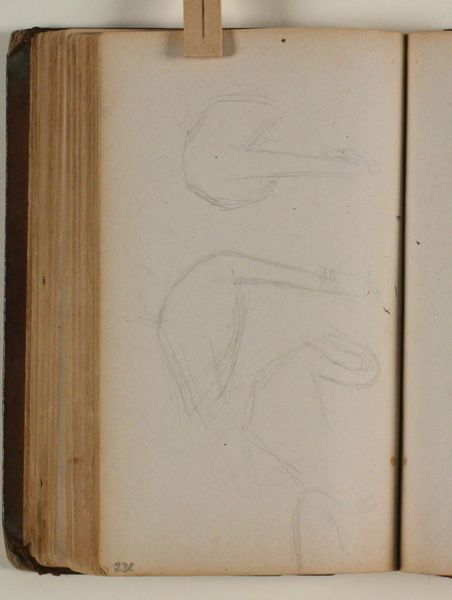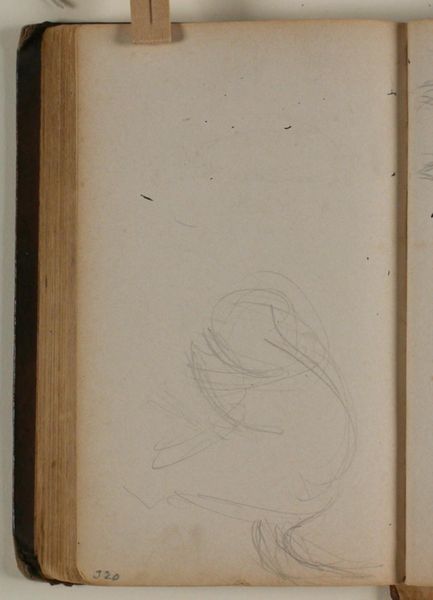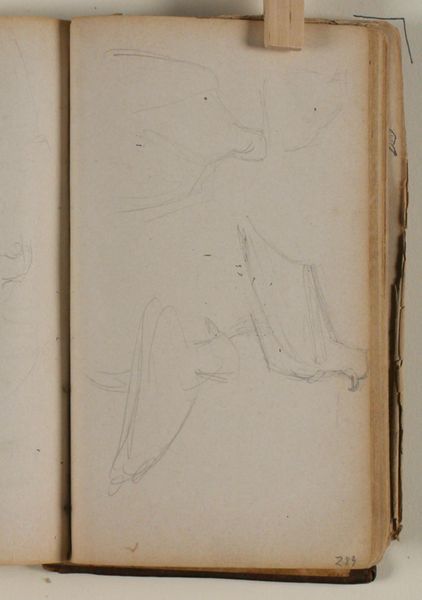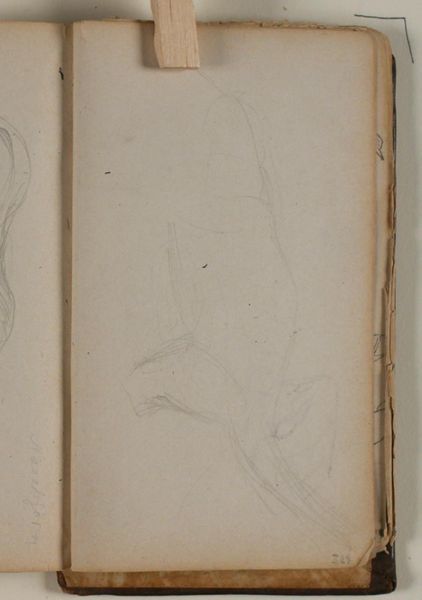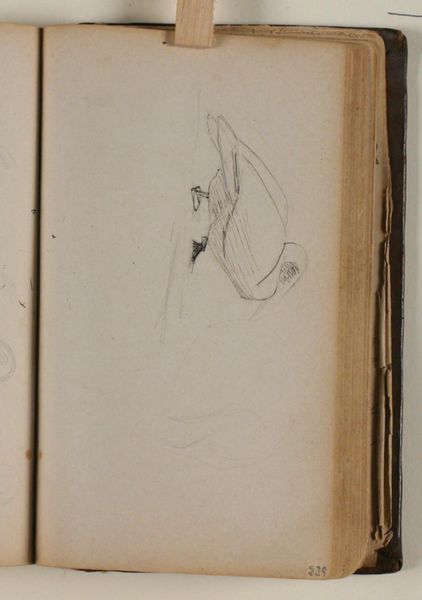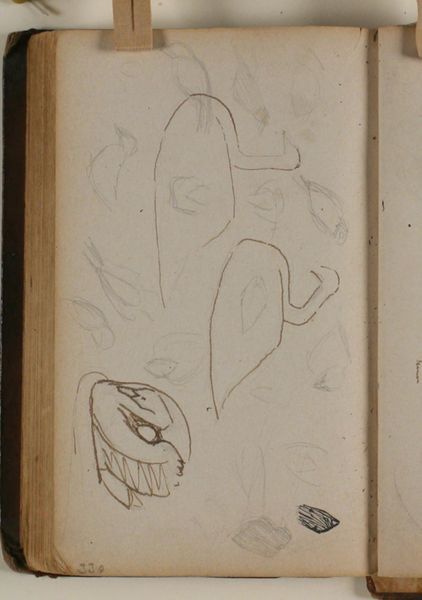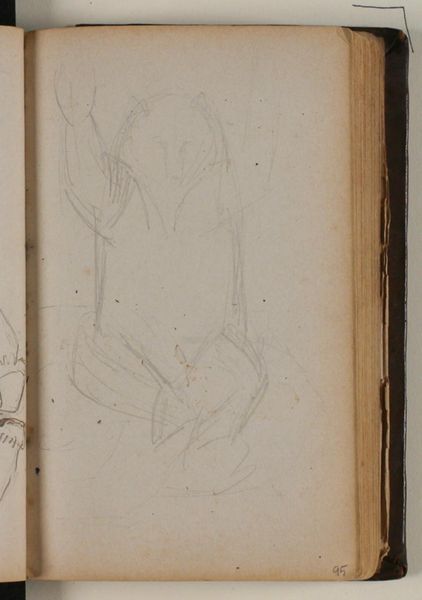
drawing, pencil, graphite
#
drawing
#
animal
#
figuration
#
pencil
#
graphite
Dimensions: 162 mm (height) x 98 mm (width) x 23 mm (depth) (monteringsmaal)
Editor: So, here we have Niels Larsen Stevns' "Two Studies of a Kangaroo," made sometime between 1864 and 1941 using pencil and graphite. What immediately strikes me is the raw simplicity of the lines. It feels so immediate and observational, almost like a sketch straight from life. What's your take on it? Curator: Considering this work through a materialist lens, I see a confluence of labor, process, and context embedded in this seemingly simple drawing. Graphite, a relatively accessible material, allows for mass reproduction, therefore it democratizes art in a way other mediums perhaps don't. Stevns chose humble materials and his labour manifests through this series of actions of rendering graphite onto paper. I also wonder about Stevns’ access to the subject. Was there a zoological garden in Copenhagen? How does the context of Danish society during this time, with its industrial shifts, influence the work? Editor: That's fascinating, the accessibility of graphite changing the artistic landscape…I hadn't considered the implications of a common material! I was just thinking of the artwork as representational, or how the artist depicted the kangaroo's form, but it's more about the production. So are you saying even the choice of such a common material impacts how we perceive “art”? Curator: Precisely. It moves away from the mystification of artistic genius towards an acknowledgement of the means of production. Consider, too, that "studies" imply repeated labour, observation and honing craft through practice. There's a material history and consumption story bound within the work. The means of distribution and the cultural values dictate reception, no? Editor: I see. So, by using easily available materials, he is perhaps, intentionally or not, rejecting the idea of art as something only for the elite. Curator: Yes, and by focusing on a "study," he privileges the act of learning, the act of creation. These studies weren't originally necessarily “art,” and this redefines it! It causes us to question the power structures determining which work becomes "art". Editor: That perspective really reframes my understanding of the drawing. Thanks! I'll never look at a graphite drawing the same way again. Curator: And that's precisely why considering art through a materialist lens is invaluable – it demystifies, democratizes, and opens up critical avenues for engagement.
Comments
No comments
Be the first to comment and join the conversation on the ultimate creative platform.
